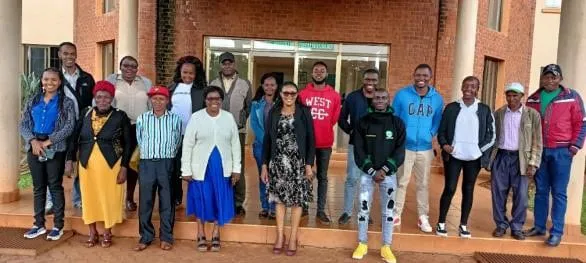Bacterial wilt disease caused by Ralstonia solanacearum impacts solanaceous crops worldwide and is considered one of the leading causes of tomato crop losses in Kenya. To counter the effects, the World Vegetable Center is piloting integrated pest management in Ethiopia and Kenya with funding from FCDO. An important practice is to graft susceptible high-producing tomato varieties on rootstock that is resistant to bacterial wilt.

A tomato grafting training event was organized on 29 November 2022 at the Horticultural Research Institute of the Kenya Agricultural and Livestock Research Organization in Thika. Participants came from private and public vegetable nurseries, farming communities, and trainers of trainers from other WorldVeg projects. Participants learned grafting skills that will help them produce high-quality and improved tomato seedlings, and they were trained on how to impart those skills to other seedling propagators in their communities. The ultimate goal of the training was to increase the adoption of tomato grafting and the production of high-quality and bacterial wilt-resistant seedlings. This will increase the availability of improved seedlings and reduce the losses caused by the disease for farmers in the major tomato-growing areas in Kenya.
The training was organized by Carolyne Wangungu (WorldVeg-Kenya), Dr. Wubetu Legesse (WorldVeg-Ethiopia), and Sylvia Kuria from KALRO-Thika. Participants learned how to diagnose and best manage the disease before learning how to do the grafting. For grafting, one-month-old bacterial wilt-resistant eggplant seedlings were used as rootstock, while 21 days-old tomato seedlings of high-yielding but susceptible varieties were used as the scion. Different types of graft union (cleft and whipped) were used to graft the scion onto the rootstock, and different types of graft connections (plastic tubing and clips) were demonstrated to hold the graft unions in place.
Feedback from participants was positive, and nursery operators acknowledged that they had never seen the practice done on tomatoes before. They also noted that the clips used to harness the graft unions were easy to use, unlike polythene wraps that are used for grafting fruit trees. The operators decided to each have a tomato grafting corner in their nurseries where they would train their attendants and farmers to hone their grafting skills and produce seedlings by themselves.
Source: avrdc.org
